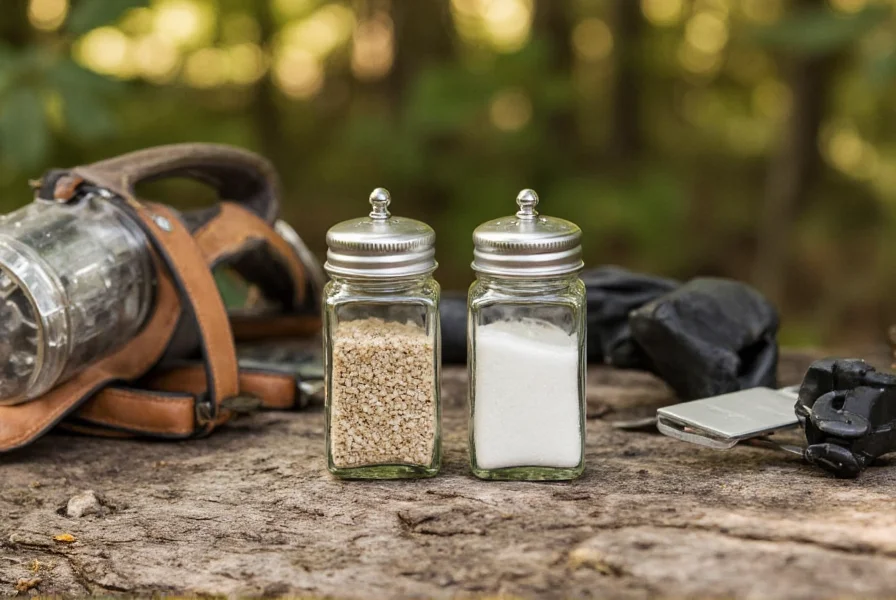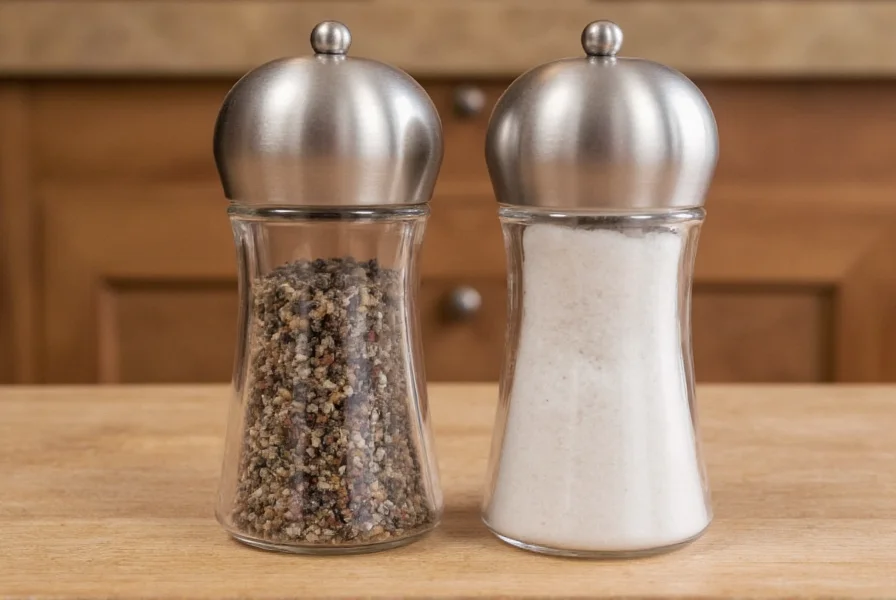These diminutive seasoning containers solve common problems associated with traditional shakers while maintaining functionality. Unlike standard shakers that typically stand 5-7 inches tall, mini versions deliver the same essential purpose in a fraction of the space. Understanding their specifications, appropriate applications, and material options helps consumers make informed decisions based on their specific needs.
Defining Mini Salt and Pepper Shaker Specifications
The term "mini" refers to shakers that maintain proper functionality while reducing size. True mini shakers generally fall within these parameters:
| Specification | Mini Shaker Range | Standard Shaker Range |
|---|---|---|
| Height | 2-4 inches (5-10 cm) | 5-7 inches (13-18 cm) |
| Capacity | 1-3 ounces (30-90 ml) | 4-8 ounces (120-240 ml) |
| Base Diameter | 1-1.5 inches (2.5-3.8 cm) | 1.75-2.5 inches (4.4-6.4 cm) |
| Weight (empty) | 1.5-3 oz (42-85 g) | 4-7 oz (113-198 g) |
When shopping for small salt and pepper shakers for camping or travel, verify these measurements as some manufacturers misleadingly label slightly smaller standard shakers as "mini" without achieving true space efficiency.
Ideal Use Cases for Compact Seasoning Containers
Mini shakers excel in specific situations where space, weight, or portability matters most. Understanding these applications helps determine whether they suit your needs:
Travel and Outdoor Activities
For backpackers, campers, and travelers, best mini salt and pepper shakers for travel provide essential seasoning without adding significant weight or bulk. Their compact size fits easily in utensil rolls, picnic baskets, or even pockets. Unlike standard shakers that might leak in luggage, quality mini versions feature secure closures designed specifically for transport.

Restaurant and Catering Settings
Many restaurants prefer compact seasoning containers for tabletops because they occupy less space while maintaining elegance. High-end establishments often use mini shakers filled with specialty salts and freshly ground peppers for a refined dining experience. The smaller size prevents over-seasoning and reduces waste compared to larger dispensers.
Small Kitchen Solutions
In apartments, RVs, boats, or tiny homes, space-saving salt and pepper shakers for small kitchens maximize counter and cabinet space. They fit in narrow spaces where standard shakers wouldn't, and their lighter weight makes them safer for upper cabinets with limited clearance.
Material Comparison for Mini Shakers
The material affects durability, functionality, and aesthetics of mini salt and pepper shakers. Each option presents distinct advantages depending on your primary use case:
Glass Mini Shakers
Glass offers excellent visibility of seasoning levels and resists staining from spices. High-quality glass mini shakers withstand temperature changes better than plastic. However, they're less ideal for outdoor activities due to breakage risk. Look for thick-walled glass models if planning occasional outdoor use.
Stainless Steel Options
Metal mini shakers provide superior durability for travel and outdoor use. They resist dents and won't break if dropped. Quality stainless steel models feature precision grinding mechanisms that outperform plastic counterparts. The main drawback is inability to see remaining seasoning without opening.
Ceramic and Pottery Varieties
Handcrafted ceramic mini shakers add aesthetic appeal to dining tables. They maintain seasoning freshness better than plastic but share glass's vulnerability to breakage. Glazed ceramic prevents salt corrosion, but ensure the glaze is food-safe and lead-free, especially for long-term storage.
Plastic Models
Budget-friendly plastic mini shakers work well for occasional outdoor use. Modern food-grade plastics resist salt corrosion better than older models. Avoid cheap plastics that may impart flavors to seasonings or degrade when exposed to sunlight during extended outdoor use.
Selecting the Right Mini Shakers for Your Needs
Choosing appropriate mini salt and pepper shakers requires evaluating several factors beyond simple size reduction:
Mechanism Quality
The dispensing mechanism proves most critical in mini versions. Smaller shakers require precision engineering to prevent clogging while delivering appropriate seasoning amounts. Look for models with adjustable grinds if purchasing pepper shakers, as finely ground pepper can clump in compact containers.
Sealing Effectiveness
Proper sealing prevents moisture absorption and keeps seasonings fresh. For travel applications, test the seal by shaking the closed container with a small amount of water. Quality mini shakers maintain integrity even when inverted or subjected to temperature changes.
Ergonomic Design
Despite their size, mini shakers should remain comfortable to hold and use. Some ultra-compact models become difficult to handle, especially with wet or greasy hands. Opt for designs with subtle texture or ridges that provide grip without compromising the miniature aesthetic.
Maintenance Tips for Longevity
Proper care extends the life of mini salt and pepper shakers significantly:
- Clean regularly with warm water (avoid dishwashers for metal mechanisms)
- Use coarse salt in salt shakers to prevent clogging
- Store with shaker holes facing down to prevent moisture accumulation
- Replace grinding mechanisms annually for optimal performance
- Never store filled shakers for more than 2-3 weeks to prevent corrosion
For glass and ceramic models, avoid extreme temperature changes that could cause cracking. Stainless steel versions benefit from occasional oiling of grinding mechanisms to maintain smooth operation.
Frequently Asked Questions
What size qualifies as a mini salt and pepper shaker?
True mini salt and pepper shakers measure 2-4 inches (5-10 cm) in height with a capacity of 1-3 ounces (30-90 ml). They maintain proper functionality while significantly reducing the footprint of standard shakers, which typically stand 5-7 inches tall with 4-8 ounce capacity.
Are mini salt and pepper shakers practical for everyday kitchen use?
Mini shakers work well for everyday use in small kitchens, RVs, boats, or for those who prefer minimal counter clutter. However, they require more frequent refilling than standard shakers. Many households keep mini shakers for daily use and standard sizes for cooking preparation where larger quantities are needed.
Do mini salt and pepper shakers clog more easily than standard sizes?
Quality mini shakers with properly engineered mechanisms don't clog more than standard versions. The key is using appropriate seasoning textures - coarse salt in salt shakers and freshly cracked pepper that isn't too fine. Avoid pre-ground pepper with anti-caking agents that can dry out and cause blockages in any shaker size.
Which material works best for travel-friendly mini shakers?
Stainless steel provides the best combination of durability, leak-proof performance, and weight for travel. High-quality models feature precision grinding mechanisms that outperform plastic alternatives. For occasional travel, thick-walled glass in protective cases works well, but stainless steel remains superior for regular outdoor use due to its resistance to breakage and temperature changes.











 浙公网安备
33010002000092号
浙公网安备
33010002000092号 浙B2-20120091-4
浙B2-20120091-4